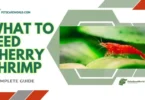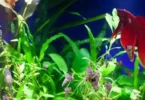Have you ever wondered what kind of fish can give birth to live young, tolerate different levels of salinity, and display a stunning array of colors and patterns? Meet Poecilia, a genus of freshwater fish that includes some of the most popular and easy-to-care-for aquarium fish, such as guppies, mollies, and Endler’s livebearers.
Poecilia is a genus of fish in the family Poeciliidae. These fishes are also known as livebearers because they give birth to live young instead of laying eggs. They are native to fresh, brackish, and saltwater in the Americas, and some species can tolerate a wide range of salinities. They are popular aquarium fish, and some of them have been used for mosquito control and scientific research.
Characteristics of Poecilia
Poecilia fishes have a variety of shapes, sizes, and colors. They range from 2 to 15 cm in length and have different fin shapes and patterns. Some of the most widespread species are the guppy (P. reticulata), the molly (P. sphenops or P. latipinna), and the Endler’s livebearer (P. wingei). These species have been selectively bred to create many different varieties for the aquarium trade.

Poecilia fish are easy to sex, as males have a modified anal fin called a gonopodium, which they use to inseminate females. They mature quickly and breed readily, with females giving birth to a dozen or more fry every month. Some Poecilia fishes are cannibalistic and will eat their own fry or those of other species.
Evolution and Distribution of Poecilia
Poecilia is the type genus of the subfamily Poeciliinae and the family Poeciliidae. The family is very old and dates back to the split between Africa and South America 100 million years ago.
Most Poecilia species are from the Americas, but there are a few exceptions, such as the African Rhexipanchax. Poecilia fishes colonized North America through the Antilles and then moved to Central America by the Aves land bridge. When South America connected to Central America three million years ago, some further dispersal southward occurred, but South American species did not move into Central America.

Among the livebearing species, there are different modes and degrees of support the female gives to the developing larvae. Some species are lecithotrophic, which means the mother provides all the resources for the egg before fertilization. Other species are matrotrophic, which means the mother provides additional resources to the offspring after fertilization. Matrotrophy is measured by a matrotrophy index (MI), which is the ratio of the dry mass of fully developed offspring to the dry mass of a fertilized egg.
Adaptations and Conservation of Poecilia
Some Poecilia species have adapted to living in extreme environments, such as waters that contain high levels of toxic hydrogen sulfide (H2S) or low levels of oxygen. Some populations of P. mexicana live in caves and have reduced eyes and pigmentation. These adaptations allow them to survive in habitats that are inhospitable to most other fishes.

However, some Poecilia species are also threatened by habitat loss, pollution, overfishing, and invasive species. Some species have very small ranges and are endangered or critically endangered. For example, the P. sulphuraria is only found in a single spring in Mexico, and the P. caucana is only found in a few streams in Colombia. Conservation efforts are needed to protect these rare and unique fishes.
Types and Varieties of Poecilia
- There are about 40 recognized species of Poecilia, divided into two subgenera: Poecilia and Micropoecilia.
- The subgenus Poecilia contains larger and more diverse species, such as the guppy ( P. reticulata ), the molly ( P. sphenops or P. latipinna ), and the Endler’s livebearer ( P. wingei ).
- The subgenus Micropoecilia contains smaller and more slender species, such as the redtail guppy ( M. picta ) and the Amazon molly ( M. formosa ).
- Within each species, many varieties and strains have been selectively bred for different colors, patterns, shapes, and sizes. For example, there are over 300 varieties of guppies, ranging from solid colors to fancy tails.
Benefits and Challenges of Keeping Poecilia as Aquarium Fish

- Their prolific breeding is one of the main benefits of Poecilia as aquarium fish. Poecilia are live-bearers, meaning they give birth to live young instead of laying eggs. They can reproduce quickly and frequently, with females giving birth to a dozen or more fry every month.
- Another benefit of keeping Poecilia as aquarium fish is their colorfulness and diversity. Poecilia are among the most varied and attractive fishes in the aquarium trade, with a wide range of hues and patterns. They can add beauty and interest to any aquarium setup.
- A third benefit of keeping Poecilia as aquarium fish is their adaptability and hardiness. They can tolerate a variety of water conditions, such as temperature, pH, hardness, and salinity. They can also survive in small tanks with minimal filtration and maintenance. However, keeping them as aquarium fish also poses some challenges, such as aggression, disease susceptibility, and environmental impact.
- Poecilia are aggressive, which is one of their main challenges as aquarium fish. They are often territorial and competitive, especially among males. They can chase, nip, and harass other fish, especially those with similar shapes or colors. They can also stress and injure themselves by fighting.
- Their disease susceptibility is another challenge for Poecilia as aquarium fish. They are prone to various infections and parasites, such as fin rot, ich, and gill flukes. They can also suffer from genetic defects and deformities due to inbreeding and hybridization.
- Their environmental impact is negative and a third challenge for Poecilia as aquarium fish. They are invasive species that can disrupt the natural ecosystems and biodiversity of their introduced habitats. They can compete with native fish for food and space, spread diseases and parasites, and alter the gene pool through hybridization.
Conclusion
Poecilia is a diverse genus of livebearing fishes that have a wide distribution and a variety of adaptations. They are popular aquarium fish and have been used for mosquito control and scientific research. However, some species are also threatened by human activities and need conservation. Poecilia fishes are exciting and important members of the aquatic biodiversity.
Do you have any Poecilia fishes in your aquarium? What are your favorite types and varieties? How do you care for them and deal with their challenges? Share your thoughts and experiences with us.
Frequently Asked Questions (FAQs)
What is Poecilia?
Poecilia is a genus of fish in the family Poeciliidae. These fishes are also known as livebearers, because they give birth to live young instead of laying eggs. They are native to fresh, brackish, and saltwater in the Americas, and some species can tolerate a wide range of salinity1.
What are some common and popular species of Poecilia?
How can I care for my Poecilia fish in an aquarium?
Poecilia fishes are easy to care for and breed in an aquarium. They require a minimum of 10 gallons of water, a heater, a filter, an air pump, and a light. They prefer a water temperature of 72-78°F (22-26°C), a pH of 7.0-8.0, and a hardness of 10-25 dGH. They are omnivorous and will eat a variety of foods, such as flakes, pellets, frozen, and live foods. They also need plants and hiding places to feel comfortable and secure.
How can I tell the difference between male and female Poecilia fish?
Poecilia fishes are easy to sex, as males have a modified anal fin called a gonopodium, which they use to inseminate females. Males are usually smaller and more colorful than females and have longer and more elaborate fins. Females are larger and plumper, and have a dark spot near the anal fin called a gravid spot, which indicates pregnancy.
How do Poecilia fish reproduce and give birth?
Poecilia fishes are livebearers, which means they give birth to live young instead of laying eggs. The male uses his gonopodium to transfer sperm to the female, and the female stores the sperm in her body. She can fertilize several batches of eggs with one mating, and produce a dozen or more fry every month. The gestation period varies from 21 to 40 days, depending on the species and the water temperature. The fry are born fully developed and can swim and feed immediately. Separate them from the adults, because their parents or other fish may eat them.






